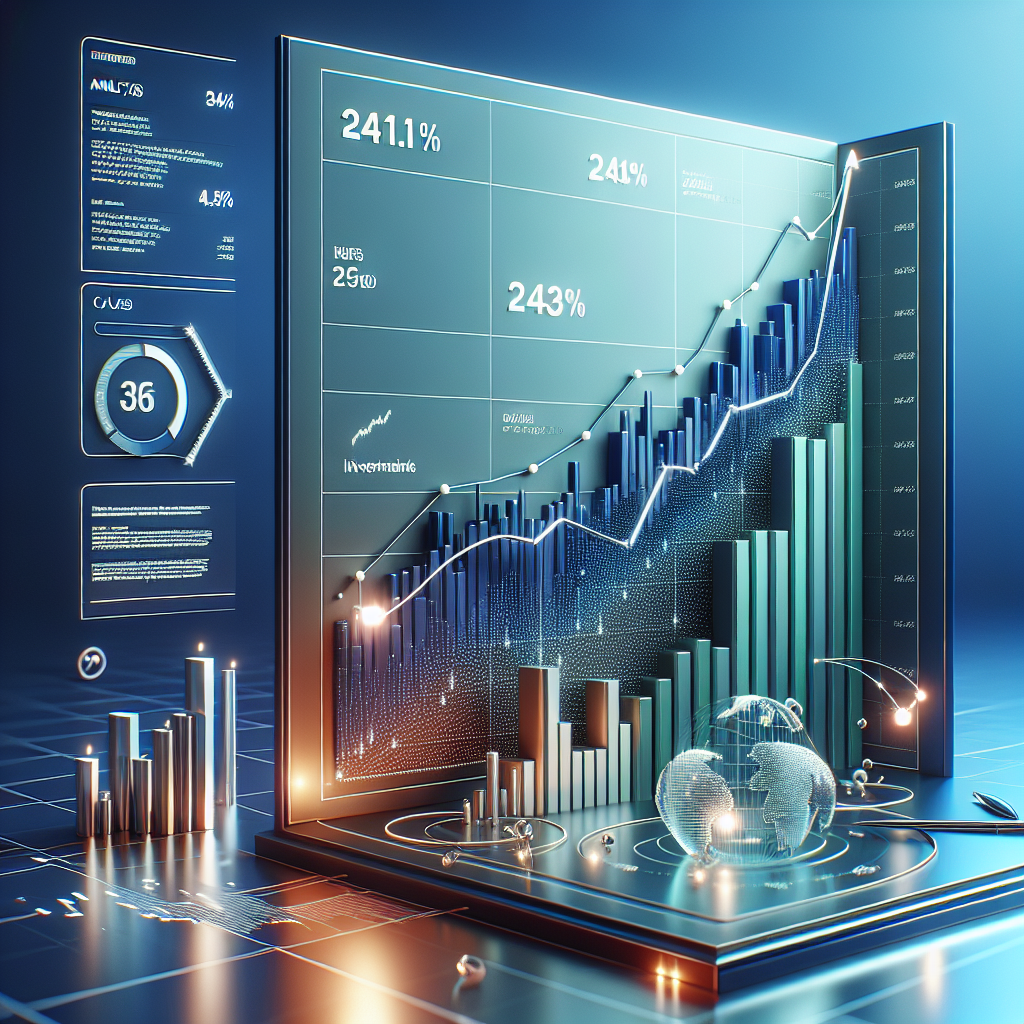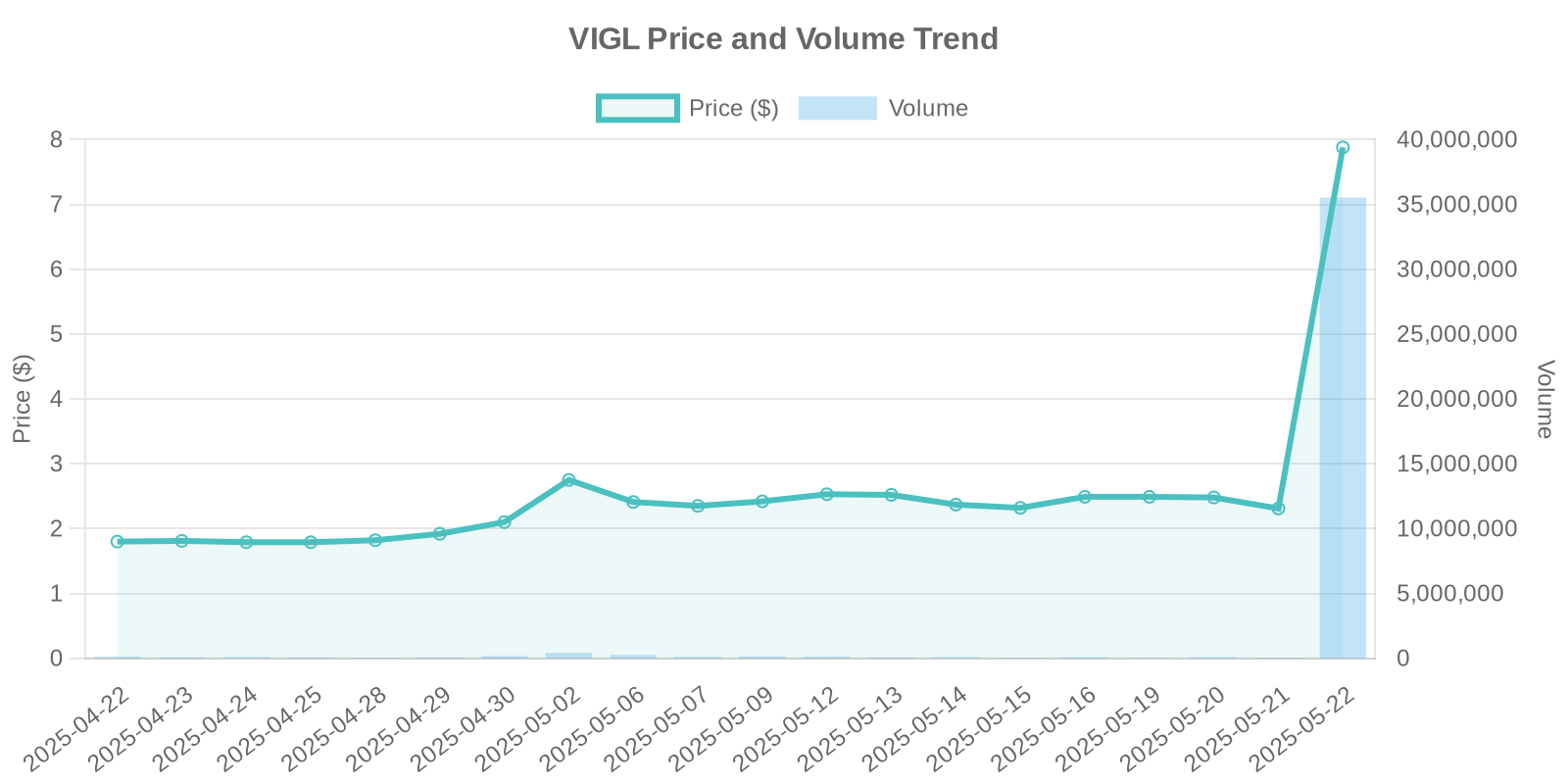
Understanding the VIGL Stock Price Surge
VIGL stock recently experienced a remarkable surge, climbing to a current price of $7.88, marking an astonishing 241.13% increase. With a trading volume soaring to 35,489,572, this surge has captured the attention of both investors and analysts. This article aims to dissect the underlying factors and possible implications of this surge for potential investors.

Industry Overview and Company Background
VIGL operates in the burgeoning sector of biotechnology, a field known for its rapid advancements and volatile market movements. As biotechnology continues to push boundaries, companies like VIGL stand at the forefront, promising breakthrough therapies and technologies. Understanding the industry landscape is crucial for gauging the sustainability of current stock trajectories.
Market Influencers and Historical Patterns
The biotechnology industry has seen fluctuating patterns, influenced by scientific developments, governmental policies, and market sentiments. Historically, biotech stocks exhibit volatility, often driven by news of FDA approvals, clinical trial results, or strategic partnerships. These factors can lead to sudden price shifts much like the current one observed in VIGL stock.
Analyzing the 241.13% Surge
To understand the VIGL surge, it’s vital to scrutinize trading volumes and the presence of any substantial insider or institutional trades. A volume of 35,489,572 is significantly higher than typical, indicating heightened investor interest or institutional buying activity.
Insider and Institutional Trading Patterns
As of the latest disclosures, there have been no prominent insider trades or buyback announcements tied directly to this surge. This absence suggests that the movement isn’t directly influenced by company officers or announced buyback strategies. Instead, the magnitude of the volume hints at possible institutional activity, potentially indicating confidence from large investors or an orchestrated accumulation strategy.
News Impact and Market Perception
Surges often align with corporate news, product announcements, or market rumors; however, the current scenario behind VIGL lacks a direct news catalyst. This anomaly suggests the potential presence of speculative trading or institutional maneuvers aiming to capitalize on anticipated future developments or market corrections.
Buyback and Insider Trading Absence: Implications
Without an insider trading or buyback narrative, potential investors are advised to exercise caution. Although institutional buying often reflects positive signals, the absence of insider trading may imply internal stakeholders withholding buy-in, suggesting an absence of immediate fundamental developments.
Potential Risks for Retail Investors
While the upward momentum appears promising, retail investors must consider associated risks. The sudden spike without corresponding news may indicate speculative trading, susceptible to rapid reversals. Historical patterns in the biotech sector emphasize caution, with previous surges followed by substantial corrections.
Comparison with Historical Patterns
Similar historical instances within the biotech sector, where stocks experienced unexplained surges, often led to volatility. For instance, examining past case studies reveals that unsustained volume spikes without concrete announcements occasionally resulted in eventual market stabilization or downward corrections.
Conclusion
In summary, the VIGL stock surge presents enticing prospects amidst its 241.13% rise. However, investors are encouraged to conduct thorough due diligence. Considering the potential absence of concrete developments and insider buy-ins, investors should approach with measured strategies, mindful of historical volatility patterns in the biotech landscape.